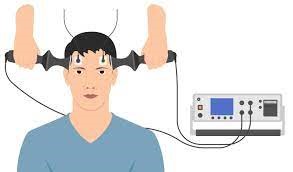A nurse is planning care for a client who has rheumatoid arthritis. Which of the following interventions should the nurse include in the plan?
Encourage the client to take a cool sponge bath each morning.
Administer opioid analgesia.
Increase the client's dietary iron intake.
Restrict the client's intake of foods high in purines.
The Correct Answer is C
Nursing Test Bank
Naxlex Comprehensive Predictor Exams
Related Questions
Correct Answer is B
Explanation
A. "Perhaps you think the ECT is dangerous, but I've seen it have good results." This response is dismissive of the client's concerns and implies that the nurse knows better than the client.
B. "You have the right to change your mind about this procedure at any time." This response respects the client's autonomy and informs them of their rights.
C. "Everyone gets a little nervous about this procedure as the time for it approaches." This response minimizes the client's feelings and assumes that they are experiencing normal anxiety.
D. "Your doctor wouldn't have suggested ECT if they didn't think it would help you." This response shifts the responsibility to the doctor and does not address the client's fears.

Correct Answer is C
Explanation
A is incorrect because it is an example of self-disclosure, not altruism. Self-disclosure is sharing personal information or feelings with others.
B is incorrect because it is an example of jealousy, not altruism. Jealousy is feeling threatened or resentful by someone else's success or happiness.
C is correct because it is an example of altruism, which is helping others without expecting anything in return. Altruism can enhance self-esteem and coping skills for clients who have breast cancer.
D is incorrect because it is an example of trust, not altruism. Trust is believing that someone is reliable and honest.
Whether you are a student looking to ace your exams or a practicing nurse seeking to enhance your expertise , our nursing education contents will empower you with the confidence and competence to make a difference in the lives of patients and become a respected leader in the healthcare field.
Visit Naxlex, invest in your future and unlock endless possibilities with our unparalleled nursing education contents today
Report Wrong Answer on the Current Question
Do you disagree with the answer? If yes, what is your expected answer? Explain.
Kindly be descriptive with the issue you are facing.
